Boxes and signatures
A box represents any process with systems as input and output.
A (monoidal) signature
- a pair of classes
- a pair of maps
Boxes and signatures
Given two signatures
a morphism
where
Diagrams: definition
Given a signature
- every box
- the identity
- so is the composition
- and the tensor
Diagrams: definition
Diagrams are subject to three axioms.
- Tensor and composition are associative and unital.
- The interchanger
which is equivalent to the following spacelike separation axiom:

Diagrams: quantum circuits
Quantum gate sets are signatures!
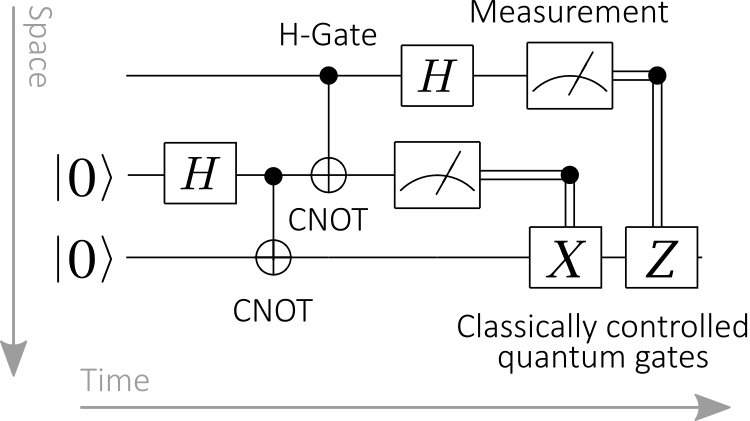
- Wires are bits and qubits.
- Boxes are quantum gates
and measurements. - Diagrams are circuits.
Diagrams: grammatical structures

Formal grammars are signatures!
Chomsky: Syntactic Structures (1957)
- Wires are grammatical types.
- Boxes are grammatical rules.
- Diagrams are grammatical structures.
Diagrams: grammatical structures
- Lambek: The mathematics of sentence structure (1958)
- Lambek: Type grammar revisited (1997)
- Clark, Sadrzadeh & Coecke: DisCoCat (2008)
Categories: definition
A (strict monoidal) category
such that associativity, unitality and naturality hold.
Functors: theorem
A (strict monoidal) functor
Theorem (Joyal & Street, 1988):
Intuition: The functors
Functors: ZX and ZW calculi
 |
 |
|---|
Hadzihasanovic, Ng, Wang: Two complete axiomatisations of pure-state qubit quantum computing (2018)
Functors: Montague semantics
- Montague, English as a formal language (1974)
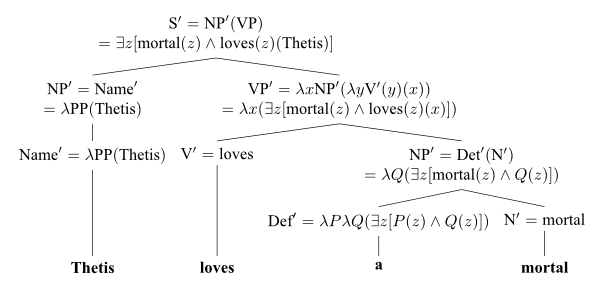
Natural language semantics as a functor
Functors: DisCoCat semantics
- Coecke, Sadrzadeh & Clark, Mathematical Foundations for a Compositional Distributional Model of Meaning (2010)
DisCoCat models are functors

Functors: QNLP
A QNLP model is a functor
- Zeng & Coecke: Quantum algorithms for compositional natural language processing (2016)
- Wiebe et al.: Quantum language processing (2019)
- Meichanetzidis, Toumi, de Felice, Coecke: Grammar-Aware Question-Answering on Quantum Computers (2020)
Frobenius algebras: definition

Coecke, Kissinger: The Compositional Structure of Multipartite Quantum Entanglement (2010)
Frobenius algebras: (anti-)special

Frobenius algebras: SLOCC

Dur, Vidal, Cirac:
Three qubits can be entangled in two inequivalent ways. (2000)
Frobenius algebras: GHZ and W

Frobenius algebras: leader election
If we assume GHZ and W as given, then we can solve
distributed consensus and leader election.
 |
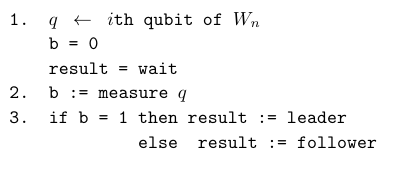 |
|---|
D’Hondt & Panangaden:
The Computational Power of the W and GHZ states (2003)
Frobenius algebras: leader election
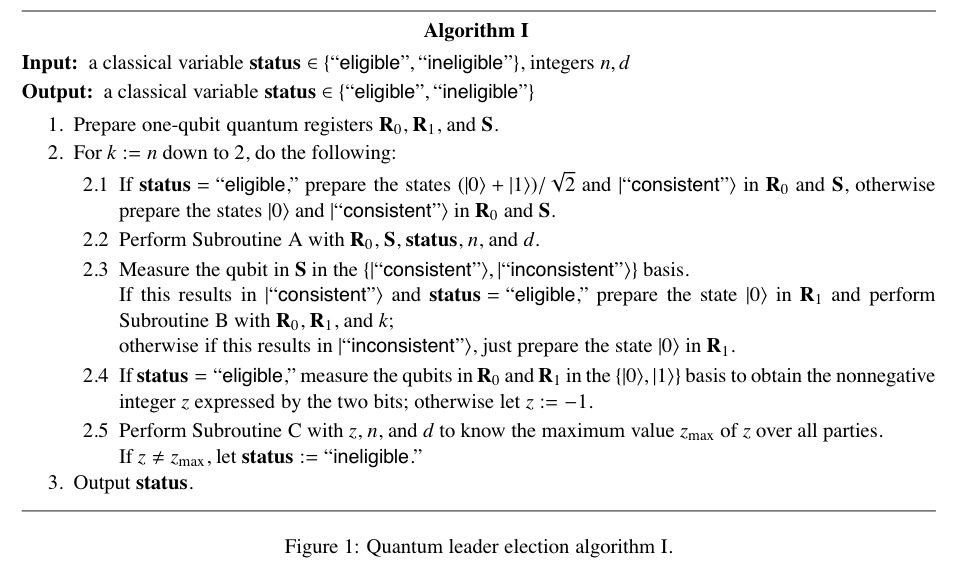
Tani, Kobayashi, Matsumoto:
Exact Quantum Algorithms for the Leader Election Problem (2007)
Frobenius algebras: leader election
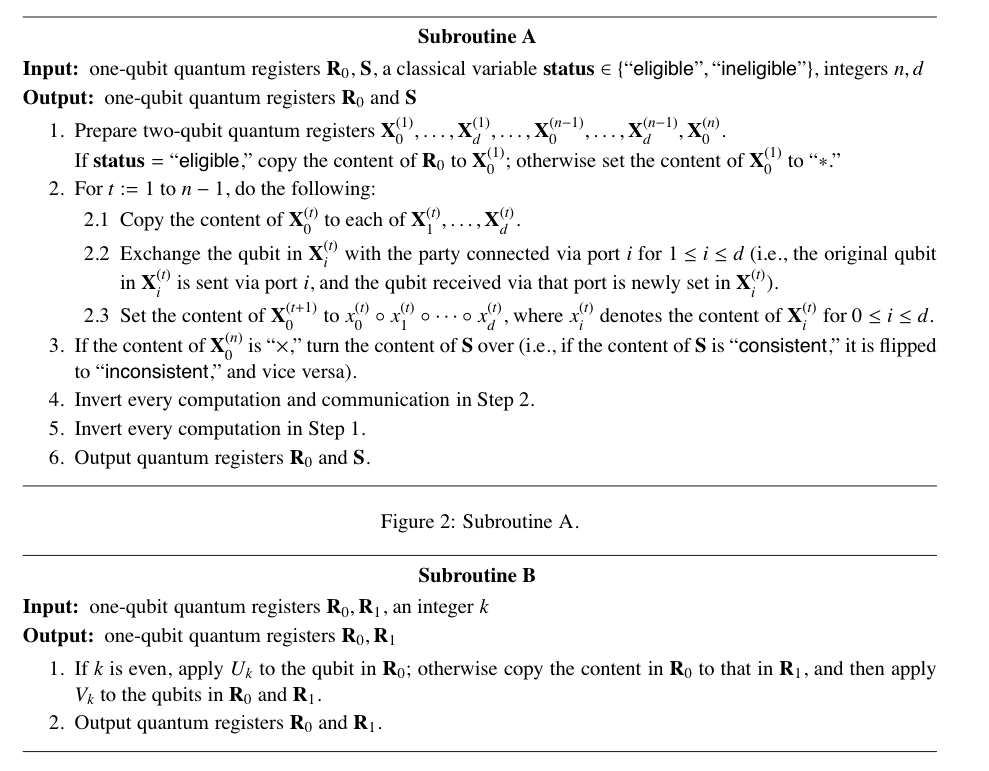
Tani, Kobayashi, Matsumoto:
Exact Quantum Algorithms for the Leader Election Problem (2007)
Frobenius algebras: leader election

Tani, Kobayashi, Matsumoto:
Exact Quantum Algorithms for the Leader Election Problem (2007)
Frobenius algebras: linguistics
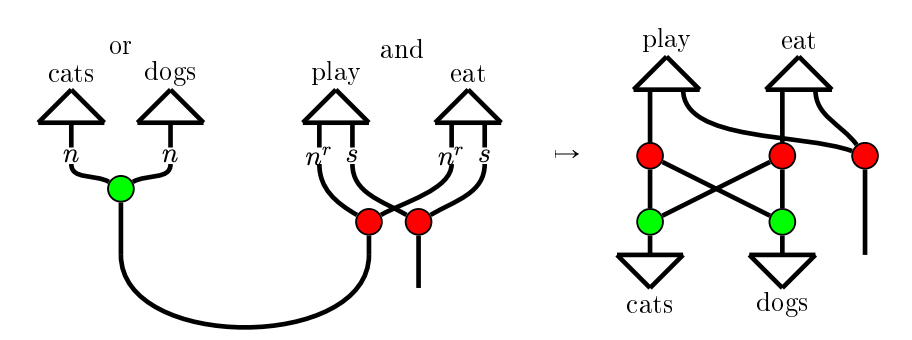
- Sadrzadeh, Clark, Coecke:
The Frobenius anatomy of word meanings (2013) - Buet: W-spiders (2017)
Frobenius algebras: linguistics
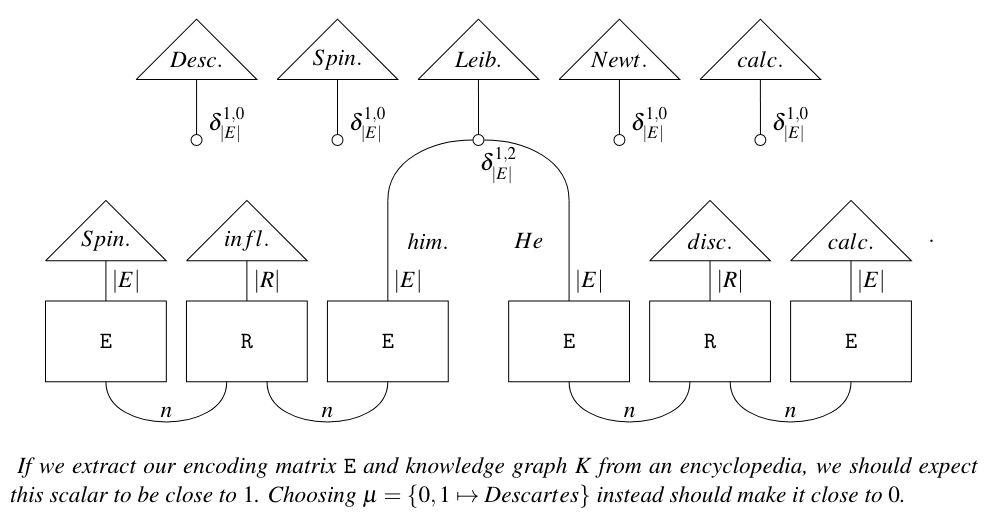
- Coecke, de Felice, Marsden, Toumi: Towards compositional distributional discourse analysis (2018)
Future directions
- Multipartite entanglement as a resource for advantage in QNLP
- Diagrammatic verification for distributed quantum protocols
- Abramsky, Shah: Relating structure and power (2021)
with game comonads to bound the communication complexity
Thanks!